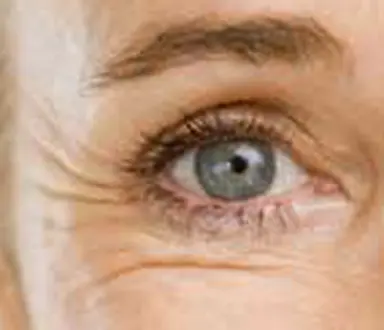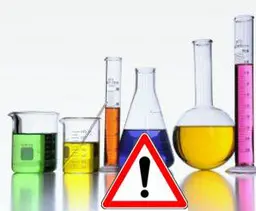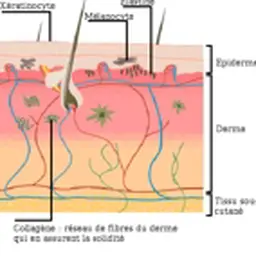
Skin ageing is an unavoidable phenomenon … Wrinkles and fine lines, as any other cutaneous change, are only an image on our face of the passing of time. As for our entire body, our skin undergoes changes along the time. For a better understanding of what we fight against, CosmeticObs-L’Observatoire des Cosmétiques gives you some clues about skin ageing.
Intrinsic factors
Intrinsic ageing is the physiological ageing linked to our heredity. Indeed, everybody has one’s own ageing clock written in one’s genetic code; this is a kind of intrinsic inheritance. This results in lifelong changes in skin aspect, texture and functioning and may be seen on the body as a whole.
Changes occur in all the skin layers:
epidermis
,
dermis
, and hypodermis.
Extrinsic factors
Extrinsic ageing is due to external causes, which may have a detrimental effect on our skin health. These are risk behaviour, such as an unhealthy lifestyle (tobacco and/or alcohol consumption or an unbalanced diet), using non-suitable or too aggressive cosmetics, and, above all, sun exposure.
Indeed, sun is a cause for a premature skin ageing, called actinic or photo-induced ageing, also known under the word: photo damage.
Due to UV radiations, free radicals are produced in larger quantities in the skin and induce damages that speed up cutaneous ageing.
Results on epidermis
When we grow older, some parameters of the appearance of epidermis change:
• The stratum corneum thickens on some areas, as renewal of cells slows down: shedding is slower, skin is coarser to the touch.
•
Epidermis
loses in thickness and in density.
• The number of melanocytes (the cells that produce the black molecule melanin) lowers and they are less randomly spread out on skin. One may then see areas where melanin production is unbalanced: skin is more sensitive to sun and brownish marks appear.
• Sebum production decreases. The
hydrolipidic film
composition is modified. Skin becomes drier, not that well nourished and moisturized.
• The number of Langerhans cells decreases, hence a disorder in its immune response.
Results on dermis
Effects of skin ageing on the dermis are listed underneath:
• A decrease of the number and size of fibroblasts, which slows down the synthesis of elastin fibers, of collagen and of glycoproteins (large molecules comprised in the fundamental substance, a kind of gel in which
dermis
cells are immersed).
• Water retention is lower, as the fundamental substance is slower renewed.
• Collagen fibers come apart from each other, hence a loss in firmness.
• The number and the quality of elastin fibers decrease, hence a loss in tonus and resilience.
• Vascularization of the
dermis
decreases, which is why older people complexion is pale.
Effects of cosmetics on the epidermis
Some actions may be performed to slow down the effect of the skin growing older:
• Strengthen the
hydrolipidic film
to counter the diminishing sebum production (
moisturizing
and nourishing).
• Exfoliation, which wipes off dead cells and renders the stratum corneum thinner.
• Use a suitable sunscreen, to protect the skin and prevent damages due to sun light.
The actions on the epidermis are superficial. Indeed, even if skin ageing is seen on this outer layer, the most dramatic damages and marks are in the dermis . Nevertheless, even if these actions on the epidermis have no effect on wrinkles or firmness, a regular moisturizing and/or anti-ageing care will help in maintaining skin in good shape by nourishing it and preventing its dehydration due to the dermis thinning.
Effects of cosmetics on the dermis
Possible actions on the dermis are mainly stimulations or some active ingredients, as moisturizing to offset the loss of fundamental substance. Damaged cells in the dermis can almost never recover through cosmetic products; nevertheless, any preventive action to lessen damages is a good idea, such as through a healthy lifestyle and a daily moisturizing of the face and body skin.
ML












